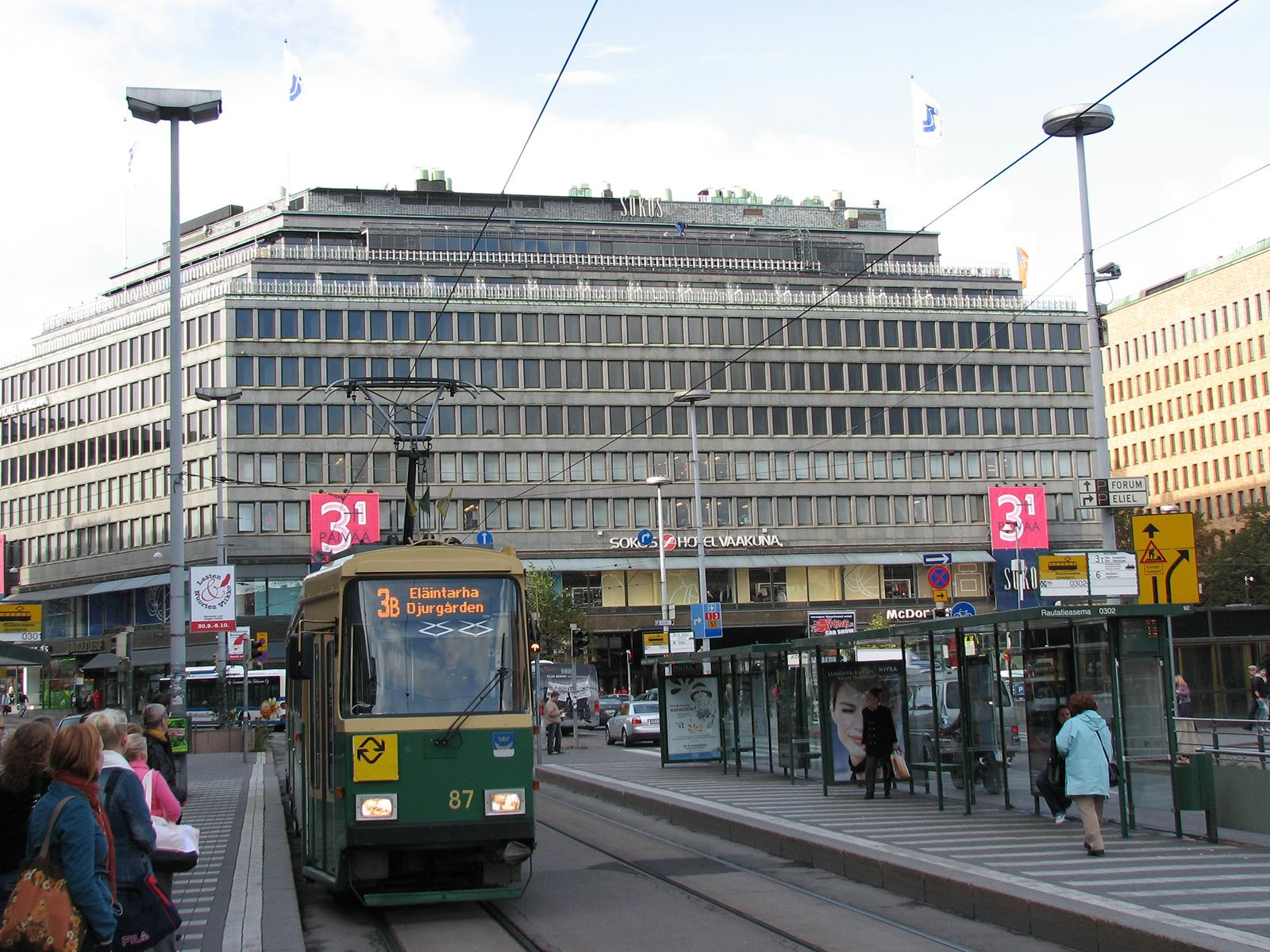Helsinki, the vibrant capital and largest city of Finland, is a captivating destination for travelers and those curious about Nordic culture. But Where Is Helsinki exactly? Nestled in the southernmost part of Finland, Helsinki sits on a peninsula that gracefully extends into the Gulf of Finland. This unique location makes it the most northerly capital of continental Europe, often lauded as the “white city of the north” due to its stunning light-colored granite buildings.
Geographically, Helsinki boasts a picturesque setting, characterized by a rugged coastline fringed with natural harbors. Its position on the Gulf of Finland places it across from Tallinn, Estonia, to the south, and Saint Petersburg, Russia, to the east across the water. This strategic location has historically made Helsinki a significant seaport and a crucial point for trade and defense in the Baltic region. The city’s coordinates are approximately 60.17° N latitude and 24.94° E longitude, firmly placing it in Northern Europe.
 Aerial view of downtown Helsinki, illustrating the city's urban layout and coastal setting in southern Finland.
Aerial view of downtown Helsinki, illustrating the city's urban layout and coastal setting in southern Finland.
A Journey Through Helsinki’s History
To truly understand where is Helsinki in the context of its development, a glimpse into its history is essential. Founded in 1550 as Helsingfors by Swedish King Gustav I Vasa, the city was initially conceived as a trading rival to Reval (modern-day Tallinn). Originally situated further north at the mouth of the Vantaa River, Helsinki was relocated in 1640 to its present site to gain better sea access.
From its early days, Helsinki held military importance, serving as a naval base and a defensive stronghold for Finland’s southern coast. The city experienced periods of hardship, including devastation by plague and fire in the early 18th century, and faced ongoing threats from Russia. To bolster its defenses, the fortress of Sveaborg (Suomenlinna) was constructed on islands just off the coast in 1748, significantly enhancing Helsinki’s security.
A pivotal moment in Helsinki’s history occurred in the early 19th century. Following Russia’s annexation of Finland from Sweden in 1808-09, Tsar Alexander I designated Helsinki as the capital of the Grand Duchy of Finland in 1812. This decision aimed partly to diminish Swedish influence and marked a dramatic shift for Helsinki, transforming it from a small provincial town into a burgeoning capital city. Much of Helsinki had been destroyed by fire during the preceding war, presenting an opportunity for grand architectural redesign.
Under the guidance of German architect Carl Ludvig Engel, Helsinki underwent a Neoclassical transformation between 1816 and 1840. Engel’s impressive designs shaped the city center, including iconic structures like the state council building, Helsinki University’s main building, and the majestic Lutheran Cathedral (Great Church) in Senate Square, completed in 1852. The Uspenski Cathedral, representing the Russian Orthodox influence, followed in 1868, adding another layer to the city’s architectural tapestry.
Helsinki’s population surged as it embraced its capital status, growing from a modest 4,000 in 1810 to over 100,000 by the early 20th century. The 20th century witnessed Finland’s declaration of independence in 1917, followed by a civil war where Helsinki was a key battleground. Despite these upheavals, Helsinki solidified its position as Finland’s political, economic, and cultural heart.
Helsinki Today: A Modern European Capital
Today, where is Helsinki is synonymous with a thriving modern European capital. Its strategic location continues to fuel its economic vitality, with its harbors serving as major entry points for Finnish imports. Key industries in Helsinki range from food processing and metalwork to chemicals, printing, textiles, and electronics manufacturing. Notably, the Arabia porcelain factory, renowned internationally, is a testament to Helsinki’s industrial prowess.
Culturally, Helsinki is rich and diverse. The city boasts numerous theaters, a respected opera and ballet company, and several symphony orchestras. The annual Helsinki Festival draws international artists and orchestras, offering a vibrant program of cultural events. Landmarks like Finlandia Hall, designed by Alvar Aalto, and the Helsinki Olympic Stadium, built for the 1952 Olympic Games, showcase the city’s architectural and cultural significance. Helsinki University, with roots dating back to 1640, stands as a major center of learning in Scandinavia.
In conclusion, where is Helsinki is more than just a geographical question; it’s about understanding a city shaped by its unique Nordic location, rich history, and dynamic present. From its peninsula setting on the Gulf of Finland to its role as a cultural and economic hub, Helsinki offers a compelling blend of natural beauty, historical depth, and modern urbanity, making it a significant capital in Northern Europe.

